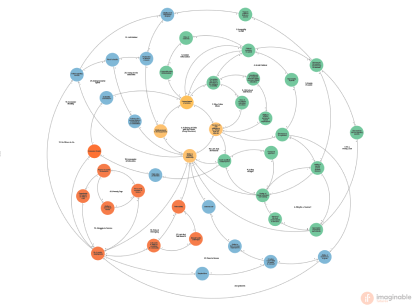Sub-Saharan Africa
Expanded Opportunities for All Youth in Africa
We support Africa’s youth by investing in local leaders, and partnering with local organizations in Kenya and South Africa that promote equitable pathways of learning and dignified livelihoods. Working inside and outside the formal education system, we invest in the development of young people so that they have the skills, opportunities and support they need to thrive. Given the inequitable outcomes for young girls and women, we also seek to improve access to child care, a primary barrier to learning and economic participation.
The Challenge
Many learners in Sub-Saharan Africa are not adequately prepared to reach their full potential. Estimates of up to 40% of learners do not meet basic outcomes in literacy and numeracy, leaving nearly half of its young people behind.
In recent years, the COVID-19 pandemic made things worse. Extended closures kept 40% of all school-age children across Eastern and Southern Africa out of school, leading to significant learning loss. Although schools have reopened, millions have not returned. Many are girls.
What If
Imagine a world where learners have expanded resources and the agency and skills they need to succeed. Where girls and young women are able to pursue education and employment opportunities, and mothers have access to quality, affordable child care options. This is the future that we imagine and are co-creating with our partners.
Our Approach
We know that challenges in education systems are highly complex and often based on deep explicit and implicit patterns. That’s why we take a systems approach to understand these patterns. We engage with stakeholders and partners across multiple backgrounds to gather rich data, insights and perspectives. Together, we constantly adapt our work so that we are investing in local leaders and ideas at the crossroads of needs and momentum. Watch our video to see how stories connect to underlying systems of inequity.
Explore Our System Map
Our practice involves detailed mapping of the key components of a given system as a way to identify leverage points, which have the potential to yield positive impact.

What We Focus On
Support Equitable and Diverse Pathways for Learning and Earning
For young people to thrive, they need multiple and diverse opportunities to learn, earn and grow within both formal and informal learning systems. We support innovative programs and infrastructure that help learners develop skills and mindsets, provide mentors, showcase positive role models and support equitable linkages to employment, opportunities and networks.
Elevate Gender Equity and Increase Quality Child Care Opportunities
In Africa, significant inequities between males and females in education attainment, health outcomes and participation in the labor market remain. Expanding access to quality child care can open up opportunities for girls and women to participate in education and employment. We support initiatives using models that can help eradicate barriers for girls to access education, economic opportunity and build their agency across all aspects of our work.
Support African-led Research and Evidence Generation
Evidence and research are essential tools to tackle complex educational issues and improve the lives of learners and their communities. In Africa, more than 80% of locally led education research is considered underfunded. We support and engage with African researchers and the funder ecosystem to cultivate the adoption of locally-led research.
